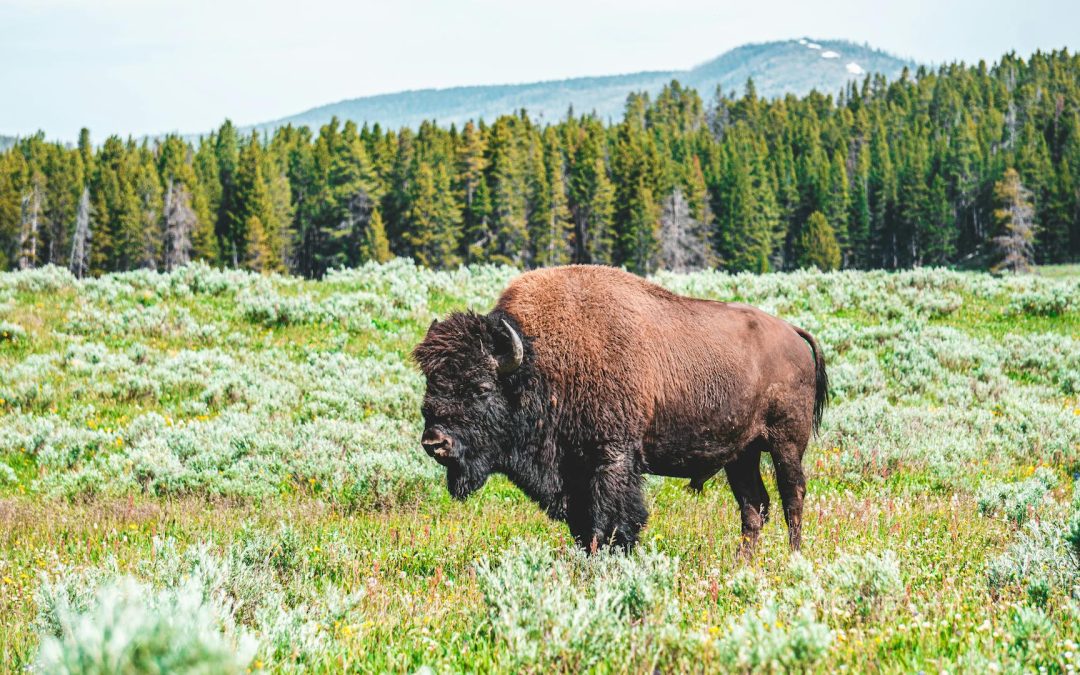Problem: A small number of wolves were reintroduced to Colorado in 2023; since then, conflicts with livestock and humans have increased…including many depredation incidents. See depredation incidents https://docs.google.com/document/u/0/d/e/2PACX-1vRKBg2b1faK1Oi53O9HKe2EuaeT8lB9q0LpCOD8p6gyAE2YSH5MY-zlWo_uJdi0fTAD16DbmCBGbaax/pub?pli=1
These wolf-livestock conflicts have incited ranchers and locals to kill the few wolves that now exist in Colorado. As evidenced by these conflicts and depredation incidents, the Colorado reintroduction of wolves has largely been a failure in the public eye of Colorado residents for this primary reason: government officials and wildlife experts failed to allocate large roaming areas, free from domestic livestock and excessive human activity, necessary for wild wolf habitats.
Solution: Habitat Protection
17 Million acres of BLM land exists in Colorado; 7.8 Million acres are allotted for livestock grazing. If wolves are to exist in Colorado without conflict with cattle or sheep, private and public lands (particularly BLM grazing allotments) allowed for livestock must be reduced.
Solution 1: Wild Lands for Wild Animals Bill
The long-term solution will require policy changes at a federal level and a vote in Congress to remove domestic livestock from public lands. Public support and pressure at a federal level will be necessary as well as likely a vote from a Democratic Congress. It will likely require many years to get to this policy of “Wild Lands for Wild Animals” but getting signatures for a bill and gaining a critical movement of public interest can start today.
Solution 2: Creation of a Mini-Yellowstone in Colorado (Linked BLM and other public lands)
Acquiring BLM land leases is the most viable solution for protecting wolf habitats as it simply requires negotiating land use deals with local ranchers and ranching communities in areas of wolf activity (most in the BLM district of Kremmling). For BLM leaseholders, see https://reports.blm.gov/report/RAS/41/Operator-Information/
SWF seeks to sublease BLM lands from ranchers who have leased large tracts of BLM grazing allotments in Colorado. As part of the sublet, SWF will pay each rancher a fair market rate for not grazing cows on BLM lands and retiring the lease for at least 3 years. During these 3 years, SWF will monitor subleased lands areas for areas of wolf activity. If potential conflict exists during these 3 years, SWF will petition the BLM to retire the lease for perpetuity.
Estimated Cost: To create a mini-Yellowstone of linked BLM lands, it is estimated, based on discussions with Castle Peak Ranch near Walden, that SWF will have to pay roughly $1M per 10,000 acres of BLM land. To preserve $550,000 acres of BLM lands (roughly 25% the 2.2 million acres of Yellowstone), it will cost approximately $55 M with some ongoing maintenance and research costs, estimated at $10 M annually.
Solution 3: Bison Ranching
Historically, bison grazing has proven to be beneficial to the soil, ecosystem, climate, and human health. Until the mid-1800s, bison were the predominant land mammal species across Western North America, with total herd numbers estimated at 60 million. Bison hooves push natural seeds deeper into the earth than cows and help moisturize the soil. Bison are more resilient to harsh weather and require 30% less water than cows. Bison also produce less methane than cows. “Methane is a primary component of natural gas and represents about a third of global warming, according to the US Environmental Protection Agency (EPA) (archived here). It is short-lived but one of the most powerful greenhouse gases — 28 times as potent as carbon dioxide.” https://factcheck.afp.com/doc.afp.com.347Z4ZG
30 % and 40 % of methane emissions are due to enteric fermentation of feed-lot livestock, which includes almost all North American cattle. The greenhouse gas burden of cattle alone equates to 5 Pg carbon dioxide equivalent yr−1. (https://www.researchgate.net/publication/349179307_Methane_efflux_from_an_American_bison_herd).
However, grass fed bison only produce 20-30% of the methane emissions of feed-lot (corn and soy fed) livestock. (https://www.ncbi.nlm.nih.gov/pmc/articles/PMC8357158/). Finally, grass-fed bison is much healthier than feed-lot beef. Bison is much leaner with only 7 grams of fat compared to 10 grams of fat in 90% lean beef. Bison also have a much higher quantity of omega 3 fats than feed-lot beef. https://www.onnit.com/academy/bison-vs-beef/ In a 2013 VA study comparing the blood of humans eating bison versus beef, bison fed humans had no increase in oxidized cholesterol or flow mediated dilation (a marker of arterial health). https://www.research.va.gov/currents/summer2013/summer2013-10.cfm
In place of feed-lot cattle ranching, let’s restore American bison ranching as a mainstay of Colorado ranching, particularly on lands where they can coexist with wolves. Yellowstone National Park as well as ranches such as The Anderson Ranch and The Flying D Ranch in Montana have proven that bison and wolves can exist in harmonious, balanced relationships. SWF has identified the Grizzly Ranch, located in northern Colorado near Coalmont, as ideal for bison ranching. The investment required for this initial ranch is $28M for 9286 acres plus 13,400 BLM leased land.https://www.zillow.com/homedetails/22447-Highway-14-Coalmont-CO-80430/338506730_zpid/
Given the market price of grass-fed ground bison goes for $12 to $17 per pound (in comparison to $ 4 to $6 per pound for GMO feed-lot beef), bison ranching has significant profit potential. Starting with this one ranch at a time, SWF seeks to acquire and convert ranches otherwise used for cattle and sheep ranching for bison ranching. Investors in these ranches shall profit from operations as well as the eventual sale of these ranches to a like-minded bison rancher (who shares SWF’s ethics for coexistence with wolves).
In sum, SWF seeks to preserve habitat for wild animals that include wolves and prey animals of wolves (elk, deer, small game) through the following actions:
1) “Wild Animals for Wild Lands” bill and grassroots Movement–removing domestic livestock from BLM Lands)
2) A Mini-Yellowstone in Colorado (Linked BLM lands free from domestic livestock)
3) Bison Ranching (replacing domestic cattle and sheep livestock on private ranches)
To donate to this habitat creation, see https://sacredwolffoundation.org/
Contact John Hughes john@sacredwolffoundation.org to discuss investing in a bison ranch.
Let’s turn the failed reintroduction of wolves in Colorado into a success!
John Hughes
Sacred Wolf Foundation
8/11/2024

